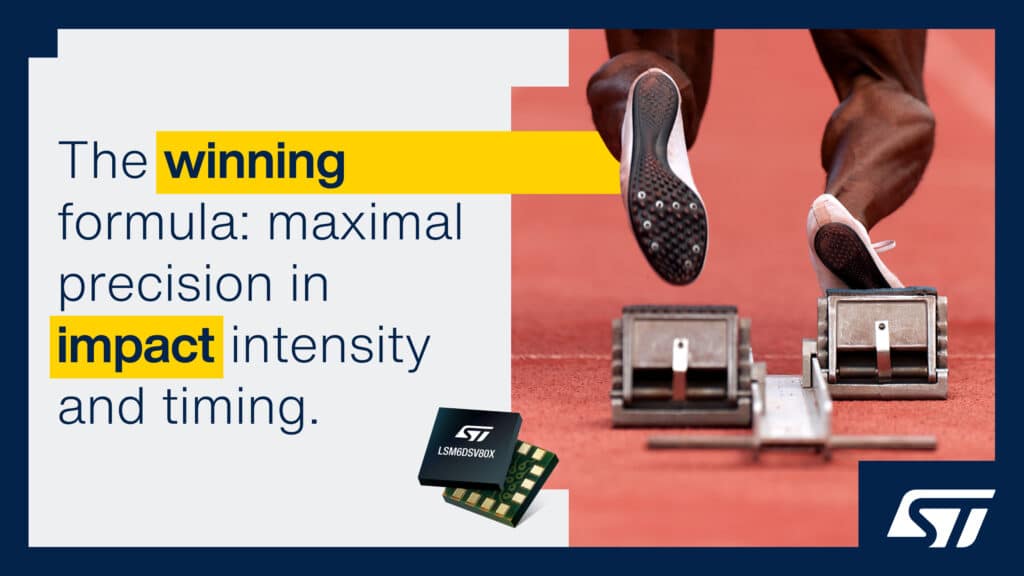16g/80g dual-range IMU with edge processing brings advanced sports monitoring to affordable wearables to “train like a pro!”
Geneva, Switzerland, February 24, 2025 — STMicroelectronics’ innovative LSM6DSV80X combines two accelerometer structures for 16g and 80g full-scale sensing, a gyroscope up 4000dps, and embedded intelligence in a single component. Capable of measuring events ranging from slight movements to intense impacts with equal accuracy, the new sensor enables enhanced features in devices such as wearables and sports trackers.
ST’s new MEMS sensor is set to redefine standards and expectations in markets for consumer and specialist wearables. By incorporating the LSM6DSV80X personal electronic devices can provide advanced capabilities such as training analysis and performance benchmarking to help athletes improve their technique. While the low-g accelerometer tracks and identifies activities like walking, running, and gesture-based interactions, high-g measurement handles energetic movements that can saturate conventional IMUs and impair accuracy.
With these unique all-in-one capabilities, the LSM6DSV80X has numerous applications in sports equipment, such as monitoring performance while running or jumping. Downhill running and explosive activities like plyometrics can involve impacts over 30g, placing high stress on knees and ankles that can now be recorded easily and cost effectively. In boxing, where impacts often exceed 60g, athletes can now capture data using commercially available wearables empowered by LSM6DSV80X to improve strength and power, as well as detecting concussions to increase safety. Sports such as tennis can benefit from intensity impact measurements for insights to improve racquet control and acceleration for greater speed and accuracy.
Alongside its advanced accelerometer architecture, the LSM6DSV80X also integrates a MEMS gyroscope and digital processing with sensor fusion low power (SFLP) technology that enables spatial orientation detection and gesture detection. In addition, ST’s machine-learning core (MLC) and finite-state machine (FSM) provide edge processing in the sensor to boost performance and save power. By processing the raw data locally, the IMU can recognize wearers’ activities autonomously and simplify host communications for sharper responses and lower power consumption. This permits fuller analysis of sports training, checking how accurately the athlete is performing the exercises. The sensor also features adaptive self-calibration (ASC) to adjust for different activity scenarios.
Developers can find full support for the LSM6DSV80X in ST MEMS Studio, the free graphical environment that provides tools for configuring the sensor, training the MLC decision tree, and testing. In addition, ST provides a selection of affordable evaluation boards that can host the new sensor with an adapter board, including the Professional MEMS tool (STEVAL-MKI109D) and SensorTile.box PRO (STEVAL-MKBOXPRO).
Samples of the LSM60DSV80X, in a 14-pin 2.5mm x 3mm x 0.86mm LGA package are available now and volume production is scheduled by the end of April 2025. Sample requests and pricing information are available from local ST sales offices.
For further information please visit: www.st.com/gen3-mems


